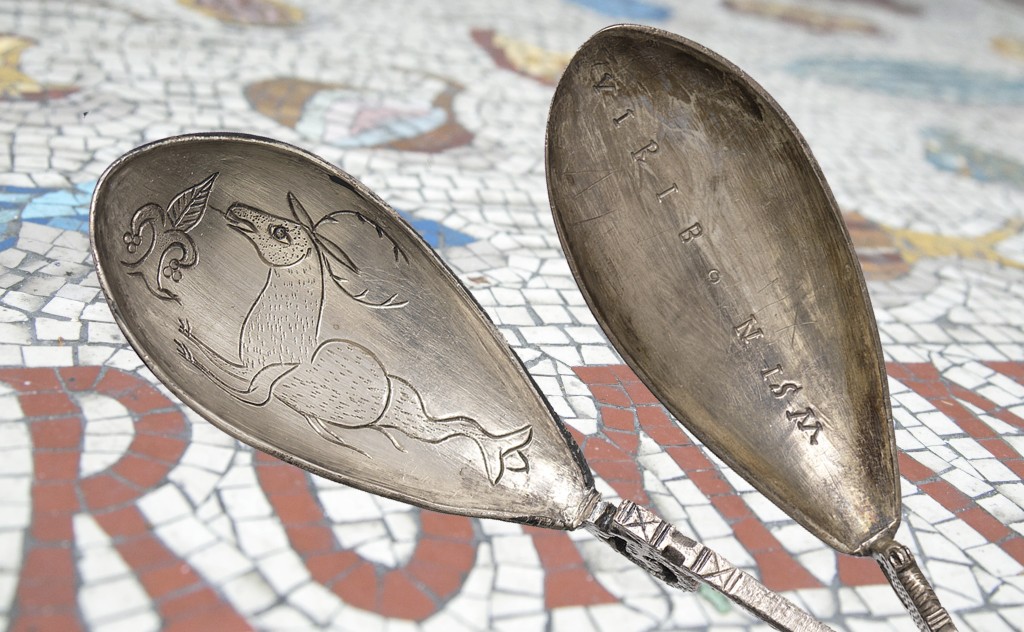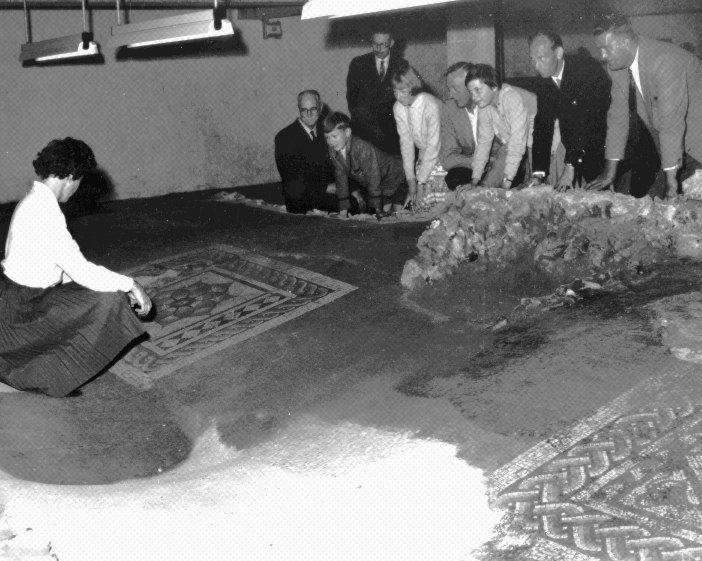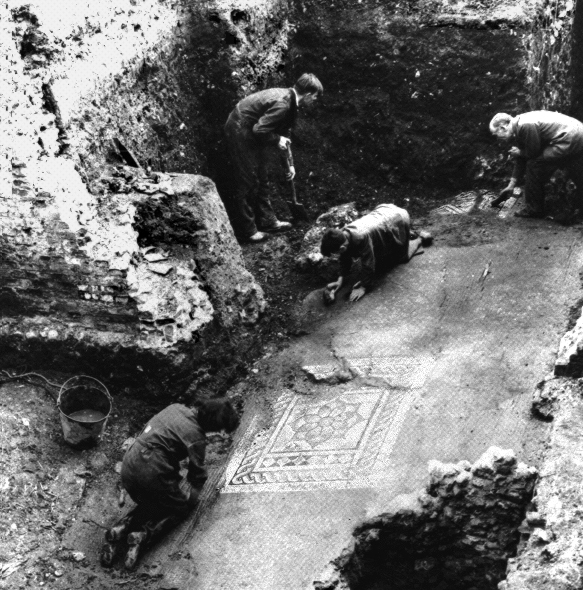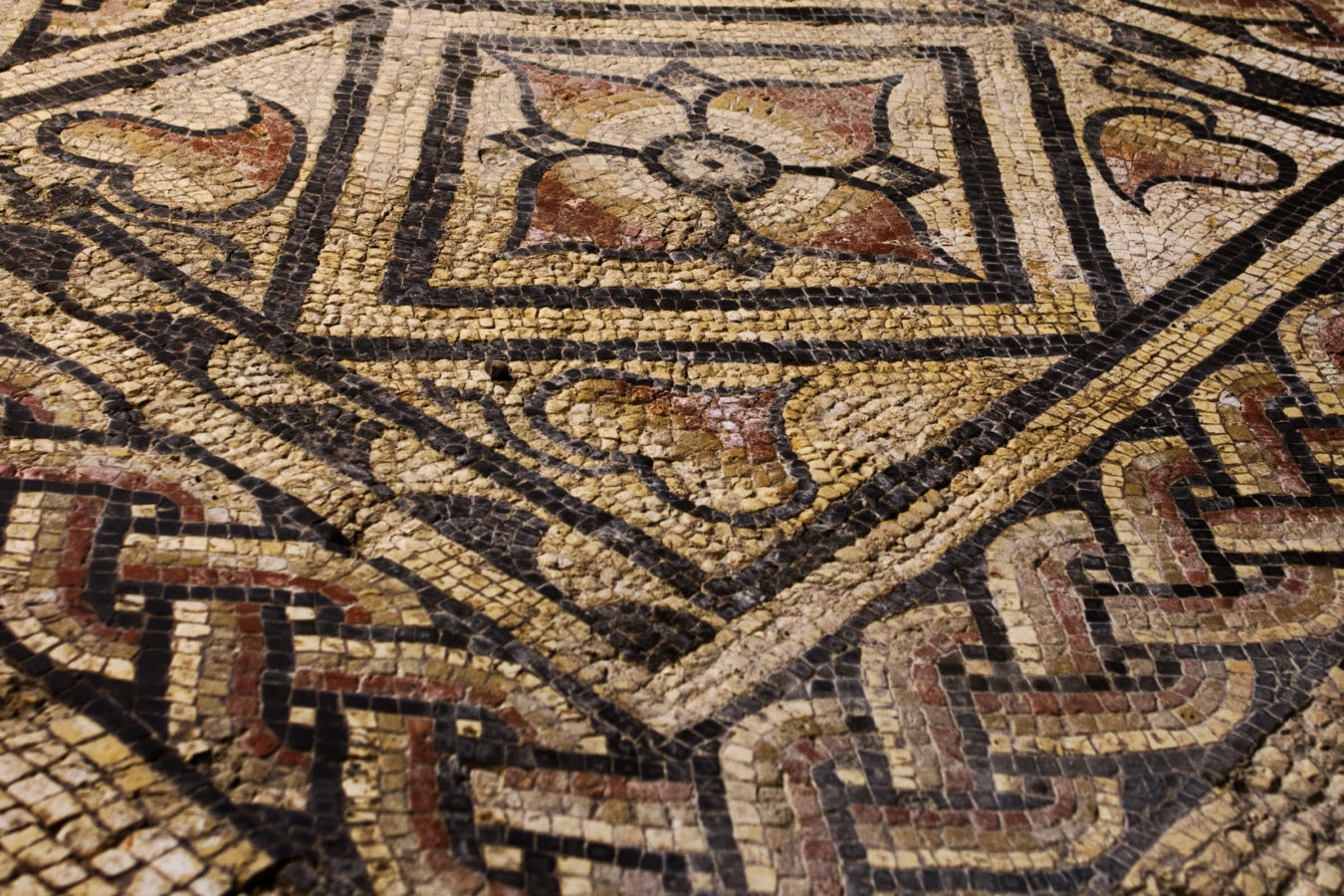
Silverware
When the garrison was withdrawn, Roman Canterbury was no longer safe. Townspeople fled as...
Roman mosaics range from the functional to the elaborately decorative. The scale and intricacy of the mosaic designs in your house would have indicated just how wealthy a Roman citizen you were. Therefore, when a mosaic pavement, with geometrical flower patterns and interlaced borders, was found in the aftermath of the blitz bombings, archaeologists knew these had to be the remains of a very large and costly Roman town house.
Excavations by the Canterbury Excavation Committee in 1945 and 1946, and further excavations carried out between 1958 and 1962, concluded that the site had a long history and underwent several structural alterations. Starting life as a timber structure in the period just prior to the Romans arriving in AD 43, between the end of the 1st century AD and around 270 AD, an extensive two-storey house had been built around a quadrangle. Part of the house is preserved within the museum and is known to extend under Butchery Lane and the shops to the north-east side and southwards out beneath the Parade. The patterned corridor, which includes three patterned mosaic inserts, would have led to a suite of baths which could not be preserved.
The mosaic remains are preserved within the museum exactly as they were found by the archaeologists. The floor would have originally been flat – the undulating surface you can see today has been caused by earth movements over the centuries.


Did you know? This mosaic is one of the UK’s only remaining in-situ Roman pavement mosaics and, as such, a Scheduled Ancient Monument!
